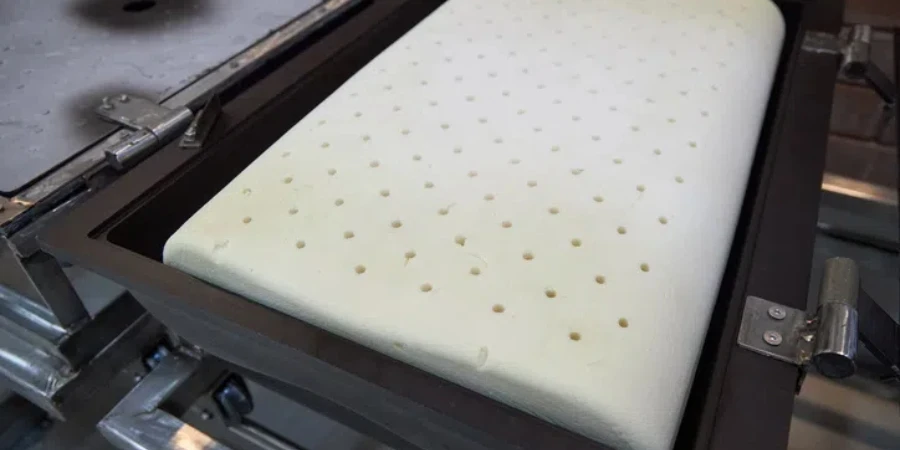Les avancées récentes dans la technologie des machines à mousse ont révolutionné l'efficacité de la production et la qualité des produits en 2025. Cet article fournit une analyse approfondie des dernières tendances du marché, des facteurs clés à prendre en compte et des dernières fonctionnalités technologiques. Les acheteurs professionnels trouveront des conseils précieux pour prendre des décisions éclairées, garantissant ainsi que leurs investissements génèrent un rendement maximal.
Sommaire :
– Aperçu complet du marché des machines à mousse
– Analyse approfondie du marché des machines à mousse
– Facteurs clés lors de la sélection des machines à mousse
– Dernières fonctionnalités technologiques dans les machines à mousse
– Conformité réglementaire et normes de sécurité
– Considérations relatives aux coûts et au budget
– Sélection de la meilleure machine à mousse pour vos besoins
- Dernières pensées
Aperçu complet du marché des machines à mousse
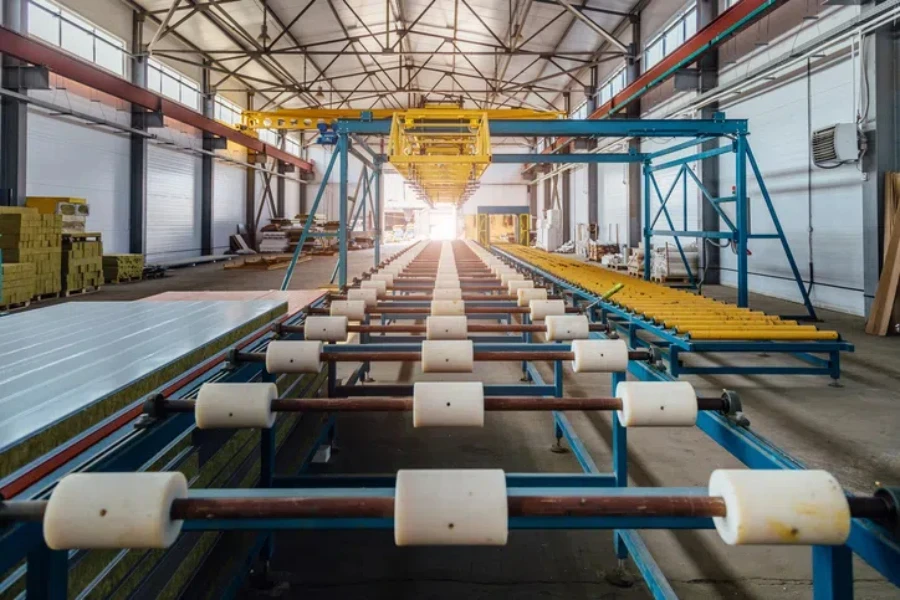
Le marché des machines à mousse a connu une croissance robuste, tirée par la demande croissante de matériaux légers et performants dans diverses industries. En 2024, la valeur du marché mondial de la mousse automobile a atteint 50.5 milliards USD, avec une valeur projetée de 71.1 milliards USD d'ici 2030, avec un TCAC de 5.8 %. De même, le marché de la mousse aérospatiale était évalué à 8.41 milliards USD en 2024 et devrait atteindre 15.57 milliards USD d'ici 2030, avec un TCAC de 10.6 %. Ces chiffres indiquent une demande importante de machines à mousse, essentielles pour produire divers types de matériaux en mousse utilisés dans l'automobile, l'aérospatiale et d'autres applications industrielles.
L'expansion du marché des machines à mousse est étroitement liée à la croissance des industries automobile et aérospatiale et à l'adoption croissante de matériaux en mousse dans la construction, l'emballage et les biens de consommation. La dynamique du marché est influencée par les progrès technologiques, le besoin de matériaux économes en énergie et les réglementations environnementales strictes. En outre, le développement de matériaux en mousse durables et biodégradables devrait créer de nouvelles opportunités de croissance.
Les principaux acteurs du marché des machines à mousse sont BASF SE, The Dow Chemical Company, Huntsman Corporation et Recticel NV. Ces entreprises investissent massivement dans la recherche et le développement pour innover et améliorer les performances des matériaux en mousse, répondant ainsi aux besoins évolutifs des industries utilisatrices finales. Le paysage concurrentiel est caractérisé par des partenariats stratégiques, des fusions et acquisitions et l'introduction de technologies avancées de machines à mousse.
Analyse approfondie du marché des machines à mousse
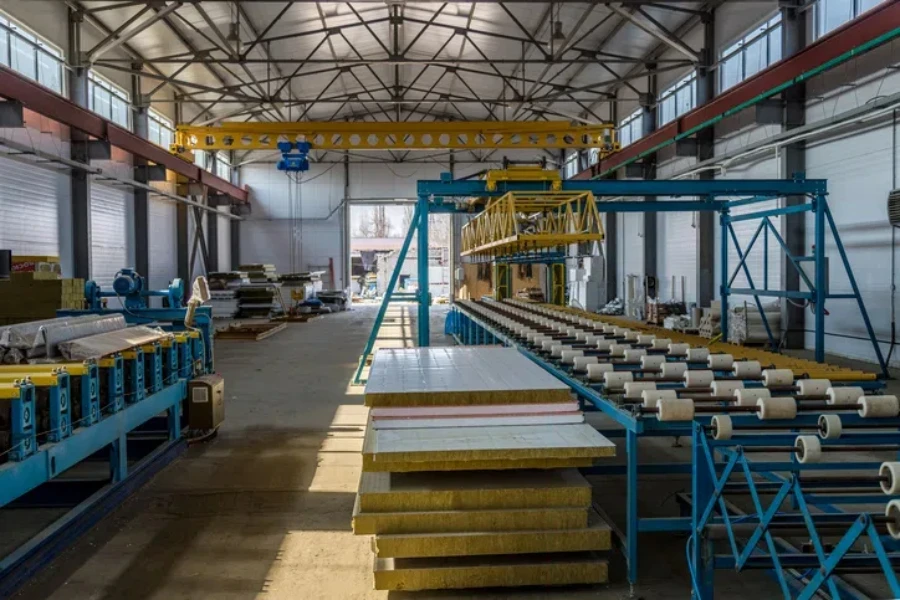
Le marché des machines à mousse connaît des avancées significatives en matière de technologie et de processus de production, visant à améliorer l'efficacité et les performances des matériaux en mousse. Les critères de performance clés des machines à mousse comprennent la haute précision, l'efficacité énergétique et la capacité à traiter différents types de mousse tels que les mousses de polyuréthane, de polyoléfine et de métal. Ces matériaux sont essentiels pour les applications dans les sièges automobiles, l'isolation, l'insonorisation et les composants aérospatiaux.
La dynamique des parts de marché révèle un environnement concurrentiel dans lequel les entreprises leaders se concentrent sur l'élargissement de leur portefeuille de produits et de leur présence géographique. Les influences économiques, telles que les fluctuations des prix des matières premières et les tensions géopolitiques, jouent un rôle essentiel dans la définition des tendances du marché. Le comportement des consommateurs évolue vers des produits respectueux de l'environnement et durables, ce qui stimule la demande de matériaux en mousse biosourcés et recyclables.
Les canaux de distribution évoluent, l'accent étant mis de plus en plus sur les ventes directes et les plateformes en ligne pour atteindre une clientèle plus large. Les innovations récentes dans le domaine des machines à mousse comprennent des technologies avancées d'extrusion et de moulage, permettant la production de mousses de haute qualité avec une intégrité structurelle et des performances améliorées. La numérisation des processus de fabrication, y compris l'intégration des technologies IoT et IA, améliore encore l'efficacité et la précision des machines à mousse.
Les difficultés rencontrées par les clients concernent souvent le coût élevé des équipements de pointe et les défis techniques liés à la manipulation de différents matériaux en mousse. Pour résoudre ces problèmes, les entreprises se concentrent sur la fourniture de services complets d'assistance après-vente, de formation et de maintenance. Les stratégies de positionnement de marque mettent l'accent sur l'innovation, la durabilité et la rentabilité, avec des stratégies de différenciation visant à offrir des solutions personnalisées pour répondre aux exigences spécifiques du secteur.
Les marchés de niche de l'industrie des machines à mousse comprennent des applications spécialisées telles que les mousses médicales, les matériaux isolants hautes performances et les composants structurels légers pour les véhicules électriques et l'aérospatiale. Ces segments offrent des opportunités lucratives aux entreprises capables de développer des solutions sur mesure pour répondre aux normes de performance et réglementaires strictes de ces industries.
Facteurs clés lors de la sélection d'une machine à mousse
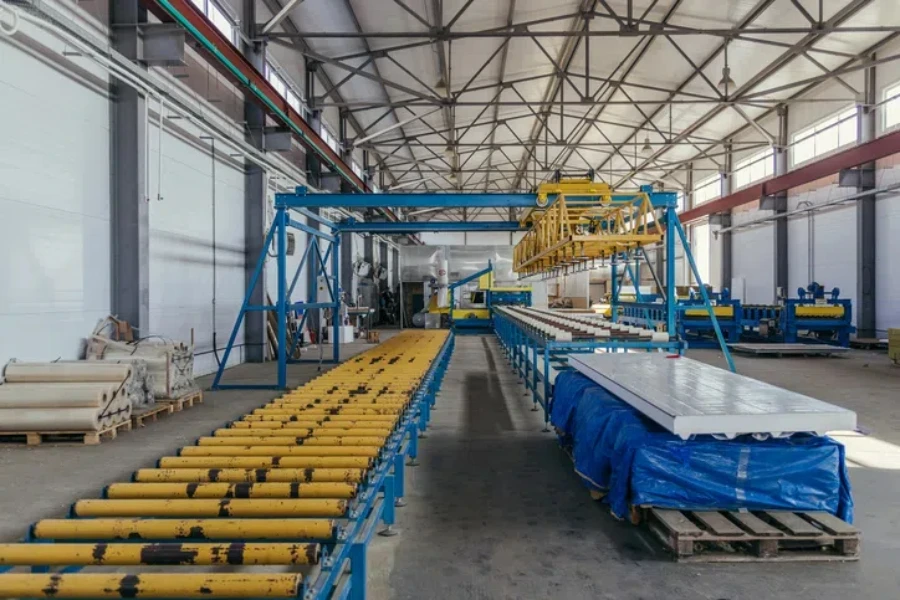
Le choix de la bonne machine à mousse est essentiel pour garantir une production, une efficacité et une qualité optimales dans diverses applications. Plusieurs facteurs clés doivent être pris en compte pour prendre une décision éclairée.
Types de machines à mousse
Les machines à mousse sont disponibles en plusieurs types, chacune conçue pour des applications et des matériaux spécifiques. Comprendre les différents types peut vous aider à sélectionner l'équipement le plus adapté à vos besoins.
Machines à mousse cellulaire ouverte : Ces machines produisent de la mousse à pores interconnectés, idéale pour les applications de filtration. Elles sont généralement utilisées dans les industries où une filtration de l'air ou des liquides est nécessaire, comme les systèmes CVC et les usines de traitement des eaux. Les performances des machines à mousse à cellules ouvertes dépendent de la taille et de l'uniformité des pores, ce qui peut avoir un impact significatif sur l'efficacité de la filtration.
Machines de production de mousse cellulaire fermée : Ces machines fabriquent de la mousse à pores fermés, ce qui les rend adaptées aux applications de flottaison et de flottaison. La mousse à cellules fermées est couramment utilisée dans les industries marine et automobile en raison de son excellente résistance à l'absorption d'eau. Les machines doivent garantir une structure cellulaire cohérente pour maintenir les propriétés de flottaison de la mousse.
Machines à mousse souple : Les machines à mousse flexible produisent de la mousse qui peut se plier et absorber les impacts sans se fissurer. Ce type de mousse est largement utilisé dans les applications d'amortissement, telles que les meubles, les sièges automobiles et les emballages. Les machines doivent permettre un contrôle précis de la densité et de la flexibilité de la mousse pour répondre aux exigences spécifiques de l'application.
Machines pour mousse rigide : Les machines à mousse rigide créent de la mousse avec une matrice solide et peu ou pas de flexibilité. Ce type de mousse est utilisé dans la construction pour les panneaux isolants et les composants structurels. Les machines doivent garantir une résistance à la compression élevée et une stabilité dimensionnelle pour répondre aux normes de construction.
Machines à mousse réticulaire : Les machines à mousse réticulaire produisent de la mousse à structure ouverte et un réseau de brins de matériau fins. Cette mousse est utilisée dans les applications nécessitant une grande surface, telles que les filtres et les absorbeurs de bruit. Les machines doivent offrir un contrôle précis du processus de réticulation pour obtenir la structure de pores souhaitée.
Performances et fonctionnalités
Les performances et la fonctionnalité des machines à mousse sont des facteurs essentiels qui déterminent l'efficacité et la qualité de la mousse produite. Les indicateurs de performance clés comprennent la vitesse de production, la densité de la mousse et l'uniformité de la structure cellulaire.
Vitesse de production: Les machines à mousse à grande vitesse peuvent considérablement augmenter l'efficacité de la production, réduisant ainsi les délais et les coûts d'exploitation. Cependant, il est essentiel de veiller à ce que l'augmentation de la vitesse ne compromette pas la qualité de la mousse. Des systèmes de contrôle avancés et l'automatisation peuvent aider à maintenir la cohérence à des taux de production plus élevés.
Densité de mousse: La densité de la mousse affecte ses propriétés mécaniques, telles que sa résistance, sa flexibilité et ses capacités d'isolation. Les machines à mousse doivent offrir un contrôle précis de la densité pour produire une mousse qui répond aux exigences spécifiques de l'application. Cela peut être réalisé grâce à des rapports de mélange réglables et à des processus d'expansion contrôlés.
Uniformité de la structure cellulaire : La structure cellulaire uniforme est essentielle pour garantir des propriétés de mousse homogènes. Les machines dotées de technologies de mélange et de moulage avancées peuvent produire une mousse avec une taille et une distribution de cellules uniformes. Cela est particulièrement important dans les applications où les performances de la mousse sont essentielles, comme les dispositifs médicaux et l'isolation haute performance.
Spécifications techniques
Les spécifications techniques des machines à mousse donnent un aperçu de leurs capacités et de leur compatibilité avec différents matériaux et applications. Les spécifications clés à prendre en compte comprennent les besoins en énergie, la capacité de mélange et les systèmes de contrôle.
Exigences d'alimentation: Les besoins en énergie des machines à mousse peuvent varier en fonction de leur taille et de leur capacité de production. Il est essentiel de s'assurer que l'alimentation électrique disponible peut prendre en charge le fonctionnement des machines. De plus, les machines économes en énergie peuvent réduire les coûts d'exploitation et minimiser l'impact environnemental.
Capacité de mélange : La capacité de mélange des machines à mousse détermine le volume de mousse qui peut être produit en un seul cycle. Pour une production à grande échelle, les machines à grande capacité de mélange sont préférées pour augmenter le rendement. Cependant, pour des applications spécialisées, des machines plus petites avec des capacités de mélange précises peuvent être plus adaptées.
Systèmes de contrôle: Les systèmes de contrôle avancés des machines à mousse permettent une surveillance et un réglage précis des paramètres de production. Les systèmes de contrôle informatisés avec retour d'information en temps réel peuvent garantir une qualité de mousse constante et réduire le risque de défauts. L'intégration avec les systèmes de gestion de la production peut également améliorer l'efficacité et la traçabilité globales.
Matériaux et qualité de construction
Les matériaux utilisés dans la construction des machines à mousse et leur qualité de fabrication ont un impact direct sur leur durabilité, leurs besoins d'entretien et leurs performances globales.
Matériaux de construction: Des matériaux de haute qualité tels que l'acier inoxydable et les alliages résistants à la corrosion sont couramment utilisés dans les machines à mousse pour garantir la durabilité et la longévité. Ces matériaux peuvent résister aux conditions difficiles de la production de mousse, notamment l'exposition aux produits chimiques et aux températures élevées.
Qualité de fabrication: La qualité de fabrication des machines à mousse influe sur leur fiabilité et leurs besoins en maintenance. Les machines dotées d'une construction robuste et de composants conçus avec précision sont moins sujettes aux pannes et nécessitent une maintenance moins fréquente. Cela peut réduire les temps d'arrêt et augmenter la productivité globale.
Normes de sécurité et certifications : Le respect des normes et certifications de sécurité est essentiel pour garantir un fonctionnement sûr et répondre aux exigences réglementaires. Les machines à mousse doivent être conformes aux normes industrielles telles que les certifications CE, UL et ISO. Ces certifications indiquent que la machine a été testée pour la sécurité et les performances, offrant ainsi une assurance aux opérateurs et aux parties prenantes.
Dernières fonctionnalités technologiques dans les machines à mousse
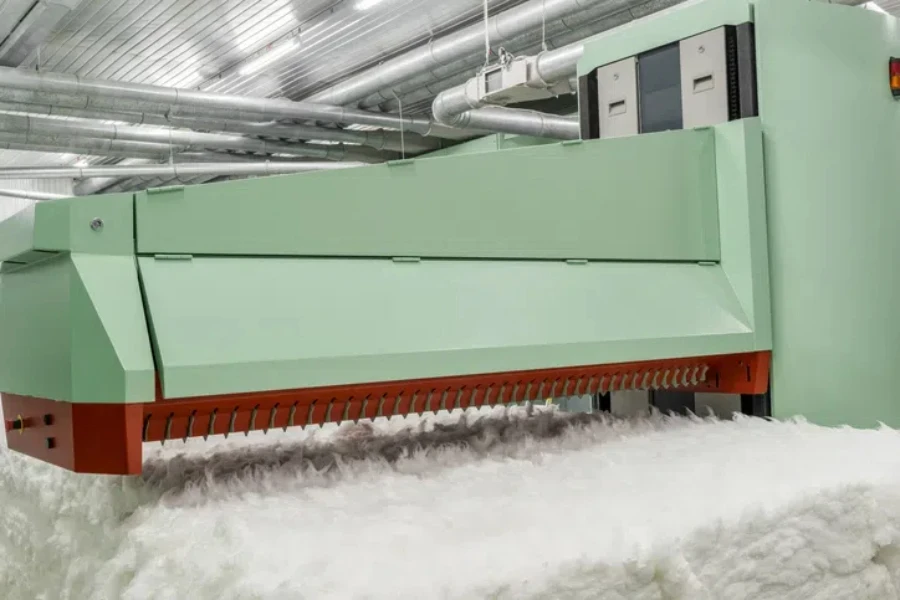
L'industrie des machines à mousse évolue en permanence grâce aux avancées technologiques. L'intégration des dernières fonctionnalités peut améliorer l'efficacité de la production, améliorer la qualité de la mousse et réduire les coûts d'exploitation.
Automatisation et contrôle
L'automatisation et les systèmes de contrôle avancés révolutionnent les machines à mousse, permettant une plus grande précision et une plus grande efficacité. Les machines automatisées peuvent effectuer des tâches complexes avec une intervention humaine minimale, réduisant ainsi le risque d'erreurs et augmentant la vitesse de production.
Intégration robotique : L'intégration de la robotique aux machines de production de mousse peut améliorer l'automatisation et la précision. Les robots peuvent gérer les processus de chargement, de mélange et de moulage des matériaux, garantissant une qualité constante et réduisant les coûts de main-d'œuvre. Les systèmes robotisés peuvent également effectuer des tâches répétitives avec une grande précision, améliorant ainsi l'efficacité globale.
Surveillance en temps réel: Les systèmes de contrôle avancés avec des capacités de surveillance en temps réel permettent aux opérateurs de suivre les paramètres de production et d'effectuer les ajustements nécessaires. Les capteurs et les analyses de données peuvent fournir des informations sur les performances des machines, permettant une maintenance prédictive et réduisant les temps d'arrêt.
L'efficacité énergétique
Les machines à mousse économes en énergie peuvent réduire considérablement les coûts d'exploitation et l'impact environnemental. Les machines modernes sont conçues pour optimiser la consommation d'énergie sans compromettre les performances.
Entraînements à fréquence variable (VFD) : Les variateurs de fréquence des machines à mousse permettent d'ajuster la vitesse du moteur en fonction des besoins de production, réduisant ainsi la consommation d'énergie. Les variateurs de fréquence assurent également un fonctionnement plus fluide et réduisent l'usure des composants mécaniques, prolongeant ainsi la durée de vie de la machine.
Systèmes de récupération de chaleur : Les systèmes de récupération de chaleur peuvent capter et réutiliser la chaleur générée pendant le processus de production de mousse. Cela peut réduire le besoin de sources de chauffage externes, diminuer les coûts énergétiques et minimiser l'impact environnemental.
Matériaux et additifs avancés
L'utilisation de matériaux et d'additifs avancés dans la production de mousse peut améliorer les propriétés du produit final. Les machines à mousse équipées pour traiter ces matériaux peuvent offrir une plus grande polyvalence et des performances améliorées.
Nanocomposites : L'intégration de nanocomposites dans la production de mousse peut améliorer les propriétés mécaniques telles que la résistance, la flexibilité et l'isolation thermique. Les machines à mousse doivent être capables de mélanger et de disperser avec précision les nanocomposites pour obtenir des propriétés uniformes.
Additifs écologiques : La demande de produits en mousse durables et respectueux de l'environnement augmente. Les machines à mousse capables de traiter des matériaux biosourcés et recyclables peuvent répondre à cette demande tout en réduisant l'impact environnemental. Ces machines doivent offrir un contrôle précis du processus de production pour garantir une qualité constante.
Conformité réglementaire et normes de sécurité
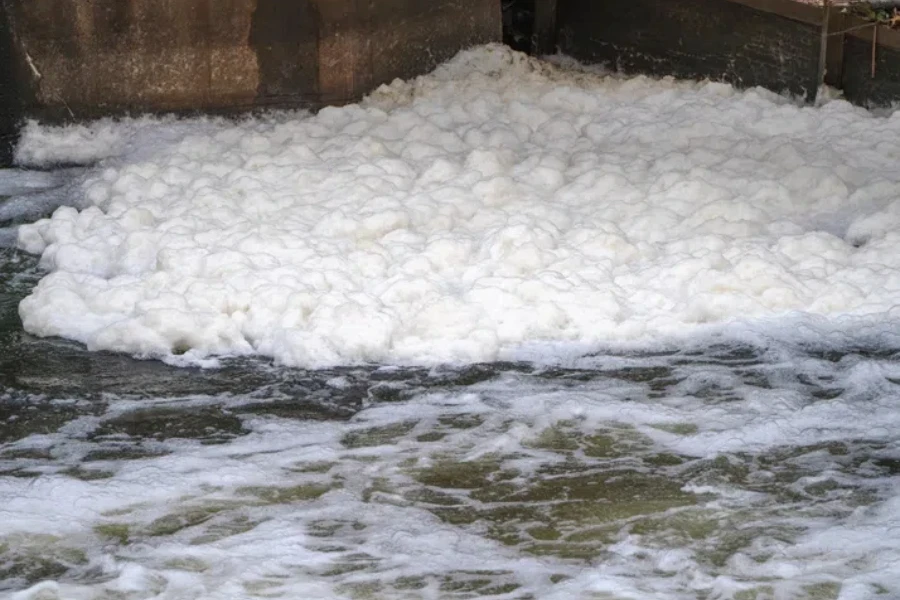
La conformité réglementaire et le respect des normes de sécurité sont des éléments essentiels à prendre en compte lors du choix d'une machine à mousse. S'assurer que la machine est conforme aux réglementations du secteur peut éviter les problèmes juridiques et garantir un fonctionnement sûr.
Normes de l'industrie
Les machines à mousse doivent être conformes aux normes industrielles pour garantir la sécurité, la qualité et les performances. Les principales normes à prendre en compte sont les certifications CE, UL et ISO.
certification CE: La certification CE indique que les machines sont conformes aux normes européennes de sécurité, de santé et de protection de l'environnement. Cette certification est essentielle pour exporter des machines à mousse vers les marchés européens.
Certification UL: La certification UL garantit que les machines répondent aux normes de sécurité établies par Underwriters Laboratories. Cette certification est largement reconnue en Amérique du Nord et est essentielle pour garantir un fonctionnement sûr.
Certification ISO: La certification ISO indique que les machines répondent aux normes internationales en matière de gestion de la qualité et de processus de production. Les machines certifiées ISO sont reconnues mondialement pour leur fiabilité et leurs performances.
Des dispositifs de sécurité
Les dispositifs de sécurité des machines à mousse sont essentiels pour protéger les opérateurs et prévenir les accidents. Les machines modernes sont équipées de divers mécanismes de sécurité pour garantir un fonctionnement sûr.
Systèmes d'arrêt d'urgence : Les systèmes d'arrêt d'urgence permettent aux opérateurs d'arrêter rapidement la machine en cas d'urgence. Ces systèmes sont essentiels pour prévenir les accidents et minimiser les dommages aux machines.
Protections et enceintes de sécurité : Les protections et enceintes de sécurité protègent les opérateurs des pièces mobiles et des matières dangereuses. Ces caractéristiques sont essentielles pour prévenir les blessures et garantir un fonctionnement sûr.
Systèmes de verrouillage : Les systèmes de verrouillage empêchent le fonctionnement de la machine si les dispositifs de sécurité ne sont pas en place. Cela garantit que les opérateurs ne peuvent pas contourner les mécanismes de sécurité, réduisant ainsi le risque d'accident.
Considérations de coût et de budget
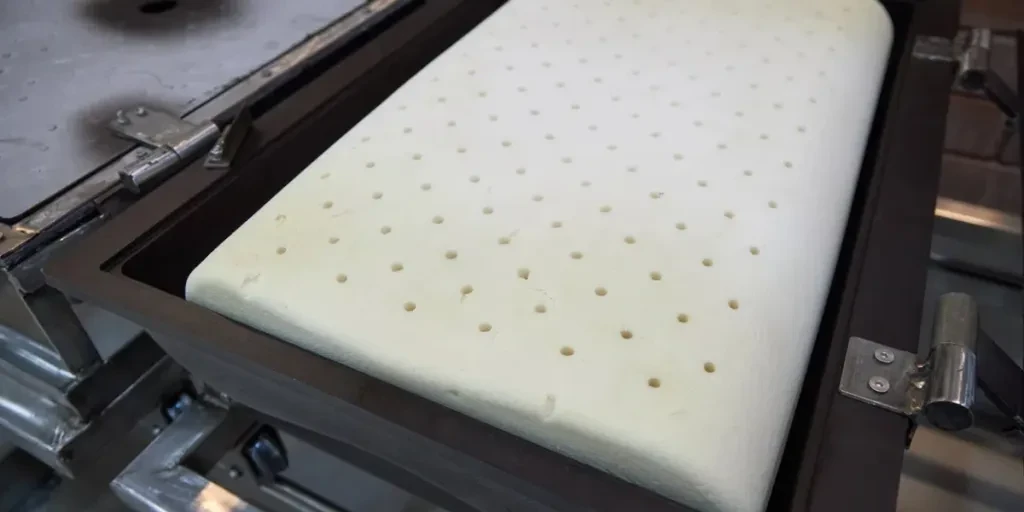
Le coût des machines à mousse est un facteur important dans le processus de prise de décision. Il est essentiel d'équilibrer l'investissement initial avec les coûts opérationnels à long terme et le retour sur investissement potentiel (ROI).
Investissement initial
L'investissement initial dans une machine à mousse comprend le prix d'achat, les coûts d'installation et tout équipement supplémentaire requis. Il est essentiel de prendre en compte les capacités et les caractéristiques de la machine pour s'assurer qu'elle répond aux exigences de production.
Prix d'achat: Le prix d'achat d'une machine à mousse varie en fonction de son type, de sa capacité et de ses fonctionnalités. Les machines haut de gamme dotées de fonctionnalités avancées peuvent avoir un coût initial plus élevé, mais peuvent offrir une efficacité et une qualité supérieures.
Frais d'installation: Les coûts d'installation comprennent les frais de mise en place des machines, de raccordement aux services publics et d'étalonnage de l'équipement. Une installation professionnelle garantit que les machines fonctionnent correctement et en toute sécurité.
Équipement supplémentaire: Des équipements supplémentaires tels que des mélangeurs, des moules et des systèmes de contrôle peuvent être nécessaires pour des applications spécifiques. Il est essentiel de prendre en compte ces coûts lors de la budgétisation des machines à mousse.
Coûts opérationnels
Les coûts d'exploitation comprennent les dépenses liées à l'énergie, à la maintenance et aux consommables. Il est essentiel de prendre en compte ces coûts pour garantir la rentabilité à long terme des machines.
Coûts énergétiques : Les machines à haut rendement énergétique peuvent réduire considérablement les coûts d'exploitation en optimisant la consommation d'énergie. Il est essentiel de prendre en compte les besoins en énergie et les fonctions d'économie d'énergie des machines.
Coûts de maintenance: Un entretien régulier est essentiel pour garantir le bon fonctionnement des machines à mousse. Les machines dotées d'une construction robuste et de systèmes de contrôle avancés peuvent nécessiter un entretien moins fréquent, réduisant ainsi les temps d'arrêt et les coûts.
Consommables: Des consommables tels que des produits chimiques, des additifs et des moules sont nécessaires à la production de mousse. Il est essentiel de prendre en compte la disponibilité et le coût de ces consommables lors de la budgétisation des machines à mousse.
Retour sur investissement (ROI)
L'évaluation du retour sur investissement potentiel des machines à mousse implique de prendre en compte l'investissement initial, les coûts opérationnels et les revenus potentiels générés. Des machines de haute qualité dotées de fonctionnalités avancées peuvent offrir un retour sur investissement plus élevé en augmentant l'efficacité de la production et la qualité du produit.
Efficacité de production: Les machines à haute vitesse de production et à haut niveau d'automatisation peuvent augmenter le rendement, réduisant ainsi les délais et les coûts opérationnels. Cela peut conduire à des revenus plus élevés et à un retour sur investissement plus rapide.
La qualité des produits: Les machines à mousse de haute qualité peuvent produire des produits cohérents et de haute qualité, réduisant ainsi le risque de défauts et de retours. Cela peut améliorer la satisfaction des clients et augmenter les ventes.
Demande du marché: Comprendre la demande du marché et les applications potentielles des produits en mousse peut aider à déterminer le retour sur investissement des machines à mousse. Investir dans des machines qui répondent aux besoins du marché peut conduire à des ventes et une rentabilité accrues.
Sélection de la meilleure machine à mousse pour vos besoins
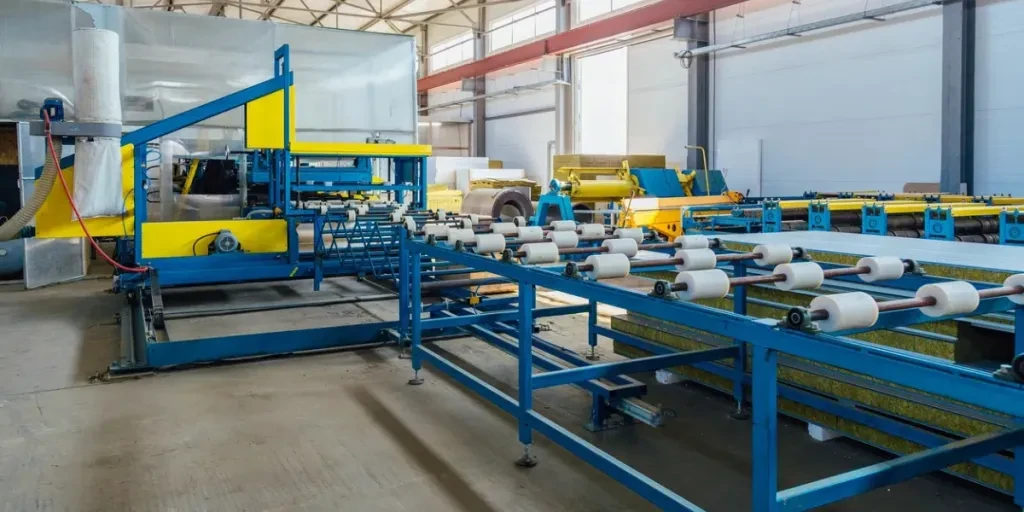
Le choix de la meilleure machine à mousse nécessite une prise en compte minutieuse de divers facteurs, notamment les types, les performances, les spécifications techniques, les matériaux, les normes de sécurité et le coût. En évaluant ces facteurs, les entreprises peuvent prendre des décisions éclairées qui répondent à leurs besoins de production et à leurs contraintes budgétaires.
Types et applications
Comprendre les différents types de machines à mousse et leurs applications peut aider à sélectionner l'équipement le plus adapté. Par exemple, les machines à mousse à cellules ouvertes sont idéales pour les applications de filtration, tandis que les machines à mousse à cellules fermées conviennent à la flottaison et à la flottaison.
Performance et spécifications
L'évaluation des performances et des spécifications techniques des machines à mousse permet de s'assurer qu'elles répondent aux exigences de production. Les indicateurs de performance clés comprennent la vitesse de production, la densité de la mousse et l'uniformité de la structure cellulaire. Les spécifications techniques telles que les besoins en énergie, la capacité de mélange et les systèmes de contrôle donnent un aperçu des capacités des machines.
Matériaux et normes de sécurité
Il est essentiel de prendre en compte les matériaux utilisés dans la construction des machines à mousse et de respecter les normes de sécurité pour garantir la durabilité et un fonctionnement sûr. Des matériaux de haute qualité et le respect des normes industrielles telles que les certifications CE, UL et ISO garantissent la fiabilité et les performances.
Coût et retour sur investissement
Il est essentiel d’équilibrer l’investissement initial avec les coûts opérationnels à long terme et le retour sur investissement potentiel pour prendre des décisions rentables. En évaluant le prix d’achat, les coûts d’installation, les dépenses opérationnelles et les revenus potentiels, les entreprises peuvent sélectionner les machines à mousse qui offrent le meilleur rapport qualité-prix pour leur investissement.
Réflexions finales
En conclusion, le choix de la bonne machine à mousse implique une évaluation complète de divers facteurs, notamment les types, les performances, les spécifications, les matériaux, les normes de sécurité et le coût. En tenant compte de ces facteurs, les entreprises peuvent prendre des décisions éclairées qui répondent à leurs besoins de production et à leurs contraintes budgétaires, garantissant ainsi une efficacité, une qualité et une rentabilité optimales.
